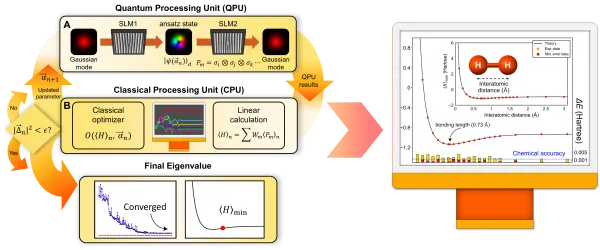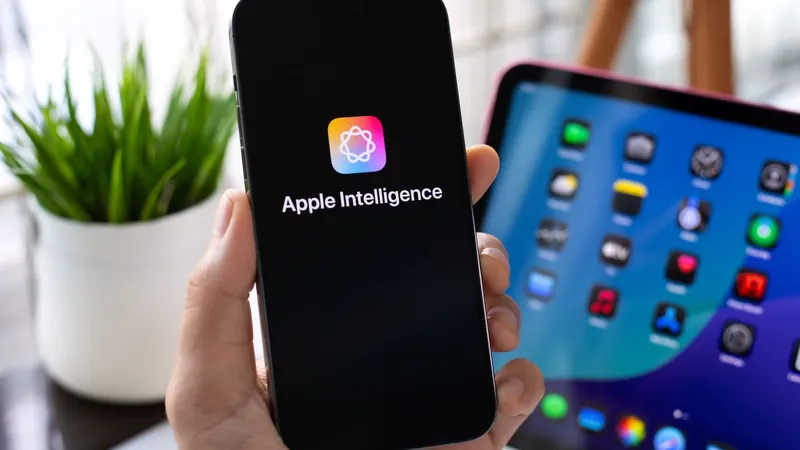
Breakthrough in Quantum Computing: Photon Qubits Set to Revolutionize AI Accuracy Without Error-Correction!
2024-11-21
Author: Wei Ling
Introduction
In a groundbreaking development merging Artificial Intelligence (AI) and quantum computing, researchers at the Korea Institute of Science and Technology (KIST) have unveiled a pioneering algorithm that not only enhances computational accuracy for estimating interatomic bond distances but also eliminates the need for tedious quantum error mitigation techniques. This innovation signifies a monumental leap in the race for more precise quantum computing, potentially accelerating the discovery of new drugs and materials.
Significance of AI in Scientific Research
The recent Nobel Prize in Chemistry was awarded to a team of scientists, including University of Washington's Professor David Baker, for their AI-assisted work in protein structure prediction, highlighting how AI is shaping the future of scientific research. As quantum computing technology emerges, it presents an extraordinary opportunity to further advance fields reliant on molecular properties.
Introducing Qudits
Dr. Hyang-Tag Lim and his research team at KIST have successfully demonstrated that a higher-dimensional quantum information system, known as a qudit, can outperform traditional qubit-based models. Unlike classic qubits which represent information in binary form (0 and 1), qudits can embody multiple states simultaneously, allowing for more intricate quantum computations. This study is revolutionary, showcasing the capability of performing high-dimensional quantum chemistry calculations—something previously unattainable in photonic systems—without relying on complex quantum error correction processes.
Expanding Computational Dimensions
Utilizing the orbital angular momentum state of single photons, the KIST team was able to expand computational dimensions and perform calculations involving hydrogen bond lengths in four dimensions and lithium hydride (LiH) in a mind-boggling sixteen dimensions—marking an unprecedented achievement in quantum system computations.
Comparison with Industry Giants
What's more, while industry giants like IBM and Google are bogged down by the challenges of scaling up their Variational Quantum Eigensolver (VQE) methods, which traditionally require significant error mitigation for accurate results, the KIST team has achieved chemical accuracy through a qudit VQE with considerably fewer resources. This breakthrough suggests a brighter future for industries that thrive on accurate molecular modeling, from pharmaceuticals to materials science, opening the door to innovative solutions for pressing global challenges, including climate change.
Optimism for Future Applications
Dr. Lim expressed optimism for future applications, stating, "By securing qudit-based quantum computing technology that can achieve chemical accuracy with fewer resources, we anticipate it to greatly benefit various practical fields, including new drug development and enhanced battery technologies."
Conclusion
The implications of this research are profound, as KIST continues to pioneer advancements that could reshape our understanding of quantum mechanics and its applicability to real-world challenges. The findings were published in the highly regarded journal, *Science Advances*, further solidifying the credibility and significance of this transformative work.
Summary
In summary, the dawn of photon qubits in quantum computing stands to challenge existing paradigms of computational technology. As this research unfolds, it promises to catalyze innovations that could redefine not only scientific inquiry but also the development of life-saving drugs and sustainable technology solutions. Stay tuned for more updates on this captivating journey toward achieving precision in quantum computing!


 Brasil (PT)
Brasil (PT)
 Canada (EN)
Canada (EN)
 Chile (ES)
Chile (ES)
 España (ES)
España (ES)
 France (FR)
France (FR)
 Hong Kong (EN)
Hong Kong (EN)
 Italia (IT)
Italia (IT)
 日本 (JA)
日本 (JA)
 Magyarország (HU)
Magyarország (HU)
 Norge (NO)
Norge (NO)
 Polska (PL)
Polska (PL)
 Schweiz (DE)
Schweiz (DE)
 Singapore (EN)
Singapore (EN)
 Sverige (SV)
Sverige (SV)
 Suomi (FI)
Suomi (FI)
 Türkiye (TR)
Türkiye (TR)